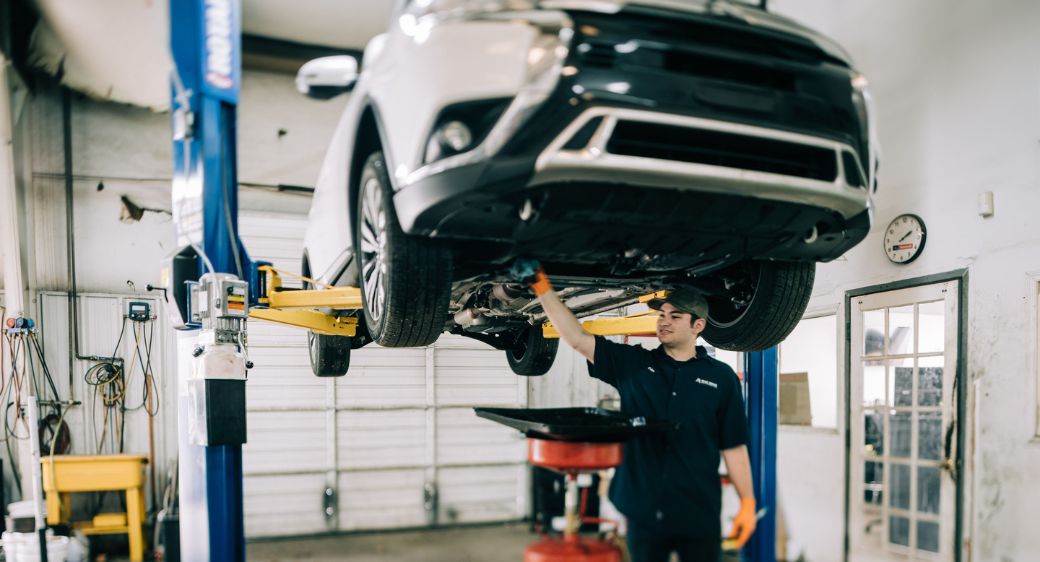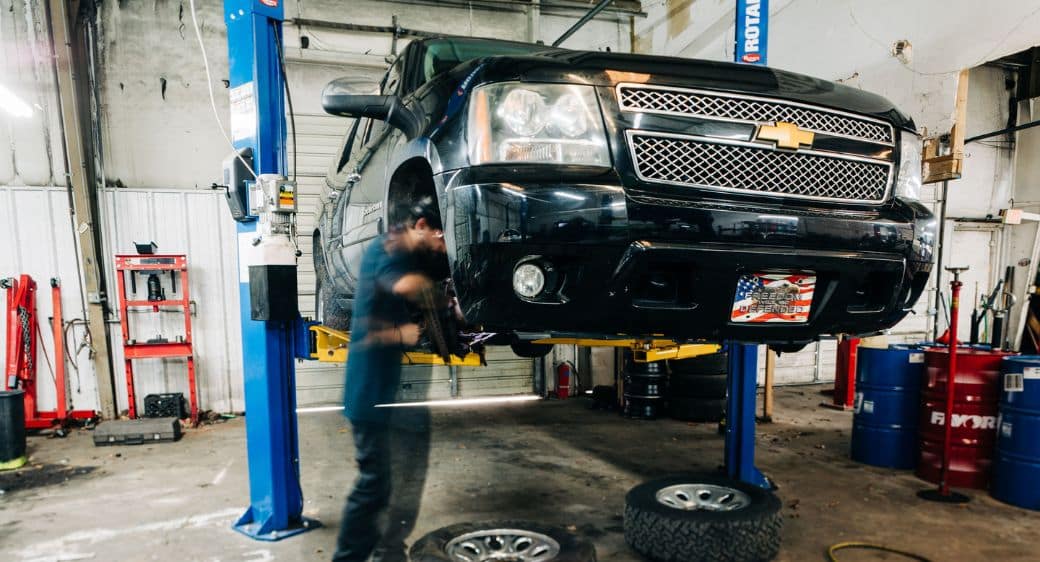The Importance of Regular Steering & Suspension Inspections

Sharing this:
When did you last check the condition of your vehicle’s steering and suspension systems? These components are fundamental to a smooth and safe driving experience, yet they are often overlooked during routine maintenance. Failing to prioritize regular steering and suspension inspections could lead to compromised vehicle handling, increased tire wear, and even dangerous accidents.
This article explores why keeping up with inspections is a necessity, not an option. You’ll learn how these systems work, the signs of problems to watch for, and how regular inspections can save you from costly repairs down the road. Whether you’re an experienced driver or new behind the wheel, understanding the importance of regular steering and suspension inspections will help keep you safe on the road.
How Steering and Suspension Work Together
Steering and suspension play interconnected roles in ensuring your car operates effectively. The steering system allows you to control the direction of your vehicle, while the suspension system absorbs shocks from the road, keeping your ride comfortable and steady. Together, these systems maintain your car's stability, handling, and safety across different driving conditions.
A well-maintained steering system ensures precise movements, whether you’re navigating sharp turns or cruising on a straight path. Meanwhile, the suspension system distributes weight evenly across the tires, so your vehicle maintains consistent traction and grip. Without this partnership, controlling your car becomes significantly more difficult, especially on uneven roads or at high speeds. This is why regular steering and suspension inspections are essential for keeping your vehicle in line with driving safety standards.
Common Problems in Steering and Suspension Systems
Like any other part of your car, steering and suspension components are subject to wear and tear over time. Early detection of issues is critical, as minor problems can escalate into serious safety hazards if left unchecked. Here are some of the most common problems drivers encounter:
Worn-Out Bushings and Ball Joints
Suspension bushings and ball joints are small but crucial components that absorb shock and connect various system parts. Over time, they can become brittle or loose, leading to excessive vibration, clunking noises, and uneven tire wear.
Misalignment
Steering misalignment causes the car to veer to one side, even when the steering wheel is straight. This can increase tire wear and reduce fuel efficiency due to uneven resistance.
Leaking Shock Absorbers or Struts
Shock absorbers and struts help dampen vibrations from rough roads. If they leak or lose their integrity, you’ll notice a bouncier ride, reduced stability, and increased stopping distances.
Power Steering Issues
Modern vehicles often rely on power steering systems, which include pumps, belts, and fluid reservoirs. Problems, such as low fluid or belt wear, can make the steering wheel stiff or unresponsive, putting the driver at risk in critical situations.
These issues compromise your vehicle’s handling, making steering and braking less effective. Regular inspections catch these problems early, which goes a long way toward keeping your car safe to drive and helping you avoid expensive repairs.

Signs You Need a Steering and Suspension Inspection
Recognizing warning signs early can prevent long-term damage to your vehicle. Start by paying attention to these red flags that indicate something may be wrong:
Unusual Noises
Clunking, knocking, or squeaking sounds while turning or driving over bumps suggest wear in your suspension or steering components.
Steering Wheel Vibrations
Steering vibrations often signal issues with alignment, loose components, or even unbalanced tires connected to suspension problems.
Poor Responsiveness
A delayed or sluggish response when turning the wheel can be linked to power steering issues or worn-out tie rods.
Uneven Tire Wear
Check your tires regularly. Uneven wear commonly points to misaligned wheels or suspension issues.
Car Pulling to One Side
Your alignment is likely off if your car drifts left or right on a straight road.
Don’t ignore these signs, even if they feel minor at first. Scheduling an inspection promptly helps identify the root cause and addresses it before it causes further problems, both mechanically and financially.
Why Regular Inspections Are Necessary
It’s easy to assume that steering and suspension parts will hold up indefinitely, but these systems constantly work under heavy strain. Every turn, brake, or pothole subjects them to significant stress. Over time, wear and tear are inevitable, making regular steering and suspension inspections vital for several reasons:
Safety on the Road
The safety implications of neglecting these systems can’t be overstated. Compromised suspension reduces your ability to maintain control over your vehicle, especially in critical situations such as emergency braking or slippery road conditions. Likewise, steering issues pose a direct threat to your ability to avoid obstacles and maintain proper lane position.
Preventative Maintenance
Routine checks help detect minor issues before they turn into costly, complicated repairs. For example, replacing a worn-out tie rod during an inspection is far less expensive than dealing with damage caused by suspension failure.
Reduced Costs Over Time
Investing in consistent inspections doesn’t just save you money on repairs but also extends the overall life of your vehicle. Adequate maintenance reduces stress on other components of the car, from the tires and brakes to the drivetrain.
Maintaining Comfort
Nobody wants an uncomfortable ride. A healthy suspension system ensures you and your passengers enjoy a smooth, quiet experience, even on less-than-ideal roads.
By prioritizing inspections, you’ll avoid sudden failures and maintain your vehicle’s reliability for years to come.

How Professionals Conduct Inspections
Inspecting your steering and suspension systems thoroughly requires expertise and specialized tools. Qualified mechanics start by checking key areas such as ball joints, bushings, struts, and tie rods for visible signs of wear. They also test the alignment, measure suspension travel, and examine power steering fluid levels and belts.
These inspections often involve raising the car on a lift to gain full access to components. Mechanics can spot rust, leaks, or fractures that usually go unnoticed during DIY checks. Advanced diagnostic tools assist in pinpointing alignment and power steering issues more accurately, ensuring a comprehensive review.
At the end of the inspection, mechanics offer recommendations. This could range from optimizing alignment and replacing worn parts to adjusting fluid levels. Addressing these adjustments immediately keeps your car in peak condition, improving safety and driving performance.
Inspection Frequency
There isn’t a one-size-fits-all answer when it comes to inspection frequency, as it often depends on how and where you drive. However, a general rule of thumb is to have your steering and suspension inspected every 12 months or 12,000 miles—or sooner if you encounter any warning signs.
Drivers who regularly travel on rough terrain, take frequent long trips, or tow heavy loads should consider more frequent inspections. Your vehicle’s owner manual may also include manufacturer recommendations tailored to your specific model.
Conclusion
As you review the important aspects of regular steering and suspension inspections, you can see why they are so vital for your car. Regular inspections protect your investment, keeping your vehicle safe, efficient, and comfortable.
If you notice any signs of steering or suspension issues—or if it's been over a year since your last check—don’t wait any longer. We offer comprehensive steering and suspension services to keep you confidently on the move. Schedule an appointment with us today and experience smoother, safer driving.



